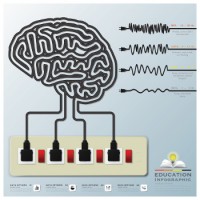
WHAT IS HYPNOSIS?
Clinical hypnosis is an established and reliable therapeutic tool. It bears only a superficial similarity to the antics of hypnotized subjects used for entertainment purposes. Therapeutic hypnosis is a voluntarily induced state of deep relaxation used to promote the incorporation of positive ideas into an individual’s mental state. It is used primarily to help patients improve their ability to manage anxiety or disturbing thoughts. It has been used as an adjunct to medical procedures to make the patient feel more comfortable during difficult experiences such as conscious oral surgery. It has also been used to support the treatment of numerous chronic medical conditions, such as rheumatoid arthritis, reaction to nauseating medications, and in the treatment of chronic skin conditions. Hypnosis can be used to help a patient manage pain, improve self esteem, achieve goals, reduce anxiety, reduce compulsive or addictive behaviors and improve concentration or focus for improved athletic or artistic performance. It has not been reliably demonstrated to improve recall of past experiences, but it can be used as a tool to help improve an individual’s memory in general. This is achieved through specific suggestions to pay closer attention to the memorization process.
Hypnosis is a natural state characterized by singularly and intentionally focused awareness or attention. The mental state that occurs when a patient is hypnotized is called “trance” to distinguish it from normal, every day awareness and to distinguish it from being asleep. A hypnotic trance may or may not have a dream like quality to it, depending on the person and how deeply the person experiences their trance state during any specific trance episode. Clinical hypnosis is always strictly voluntary. You remain in full control of your thoughts and actions the entire time you are doing a session with hypnosis. You cannot be hypnotized against your will. Hypnosis cannot make you do something that you do not want to do. Hypnosis does not wipe out your memory of your thoughts or actions while you were hypnotized. You can stop the trance instantly at any time that you wish.
In trance, you are still aware of everything going on around you. You can even speak if you want to, and you can keep your eyes open if you prefer, though it’s easier to get into the hypnosis with your eyes closed. You are not asleep, but hypnosis can be used to help you fall asleep. If you can daydream or “make-believe,” you can be hypnotized. Only about 10 percent of the general population are not good potential subjects for the use of this modality, but almost everyone is able to achieve sufficient trance to use hypnosis to support psychotherapy, if they want to try it.
Hypnosis works primarily through the process of mental imagery, which is different than what we think of as visualization. You don’t have to actually “see” an image in your mind’s eye to use hypnosis. Being able to think about an idea in a clear and intentional way is the primary utility of hypnosis.
Being able to use trance state intentionally for personal development or as an emotional or performance resource is a skill. It is easily learned and it improves with practice. Most people find hypnosis enjoyable and find self-hypnosis to be a worthwhile tool that helps the process of psychotherapy.
I am a certified hypnotherapist, trained in the Ericksonian method of metaphorical or “story-telling” hypnosis. I have been using hypnosis with good results for nearly forty years in my clinical practice.





